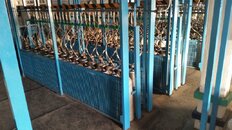I hope you understand that dive ops in Cozumel do not run compressors and fill tanks. Almost all of them get their gas from a central filling operation called Meridiano. It is irresponsible to name and blame an operator for a tank of bad gas you supposedly found. On top of that, the chance that some tanks of banked gas (air or banked nitrox rather than a custom blend) had one reading while others had a different reading would lead me to suspect your analyzer of inaccuracy. You did the right thing by analyzing, choosing a tank that satisfied you, and reporting your findings. But you might want to double check the accuracy. CO in a tank from Meridiano did cause the death of an American cave diver a couple of years ago. Since then they have put in more monitoring and safeguards, and more people are carrying CO monitors to test their gas. The odds that you found contaminated tanks and no one else has are probably lower than the odds that your analyzer gave your false positive readings. But you still did the right thing.





